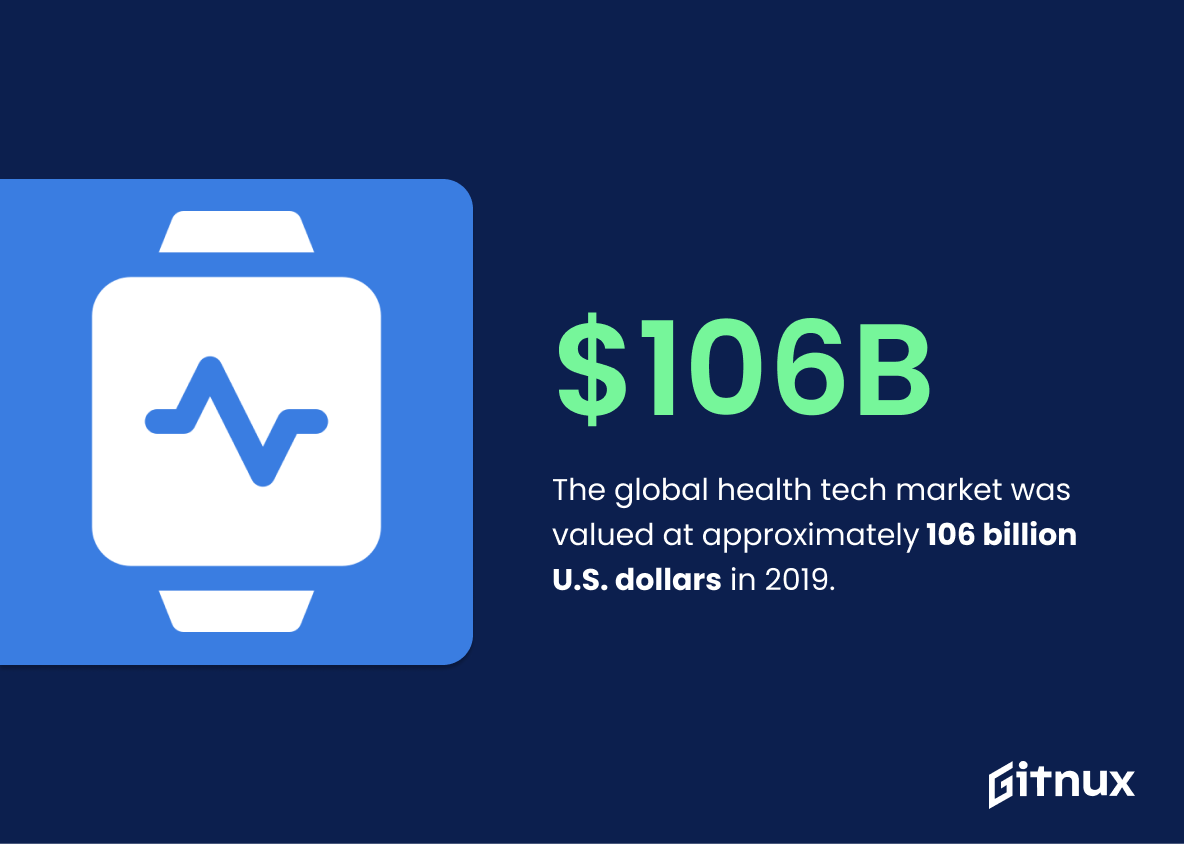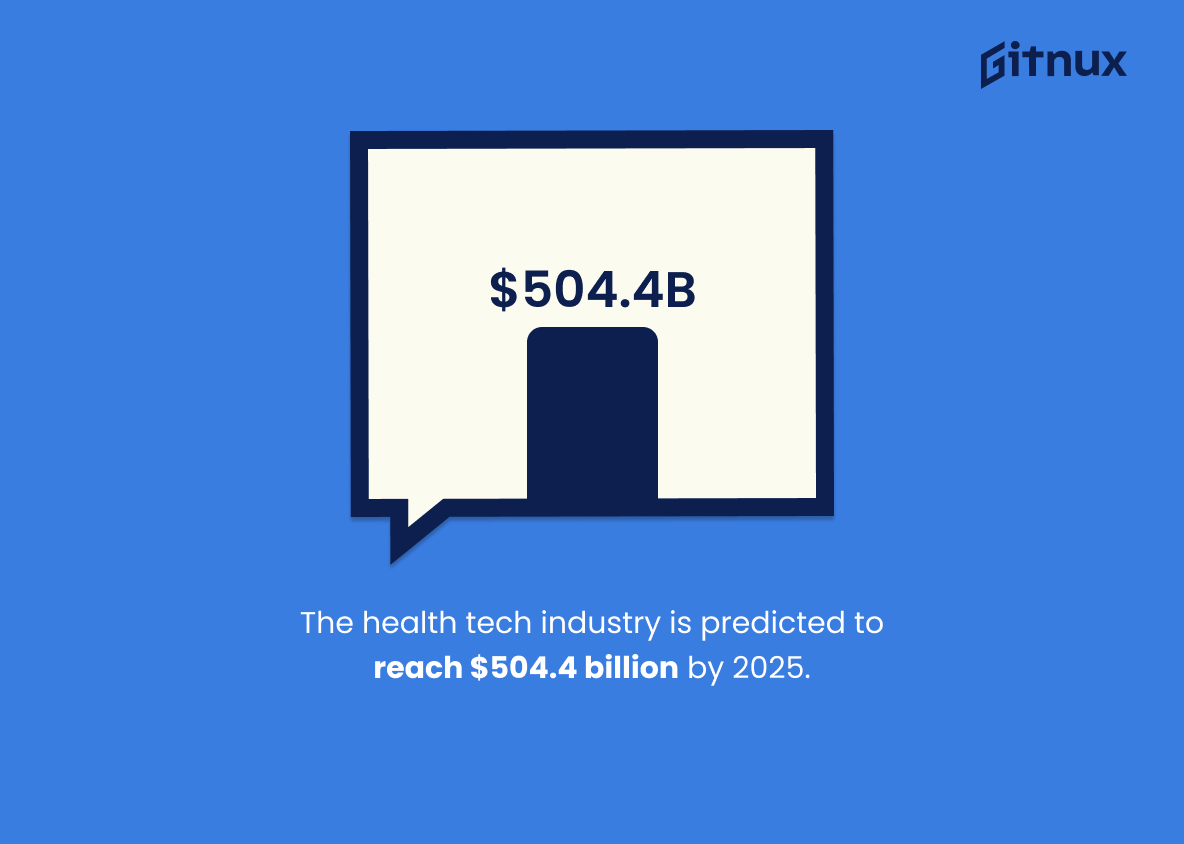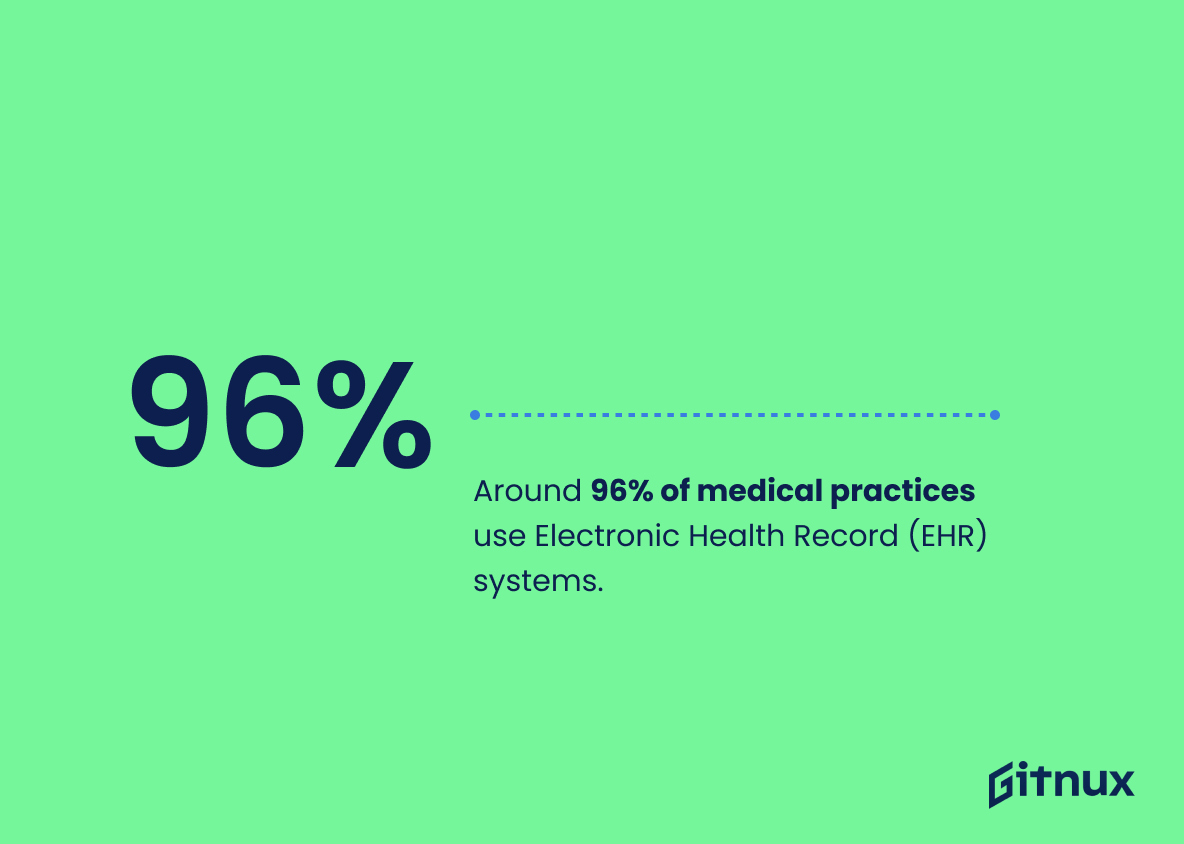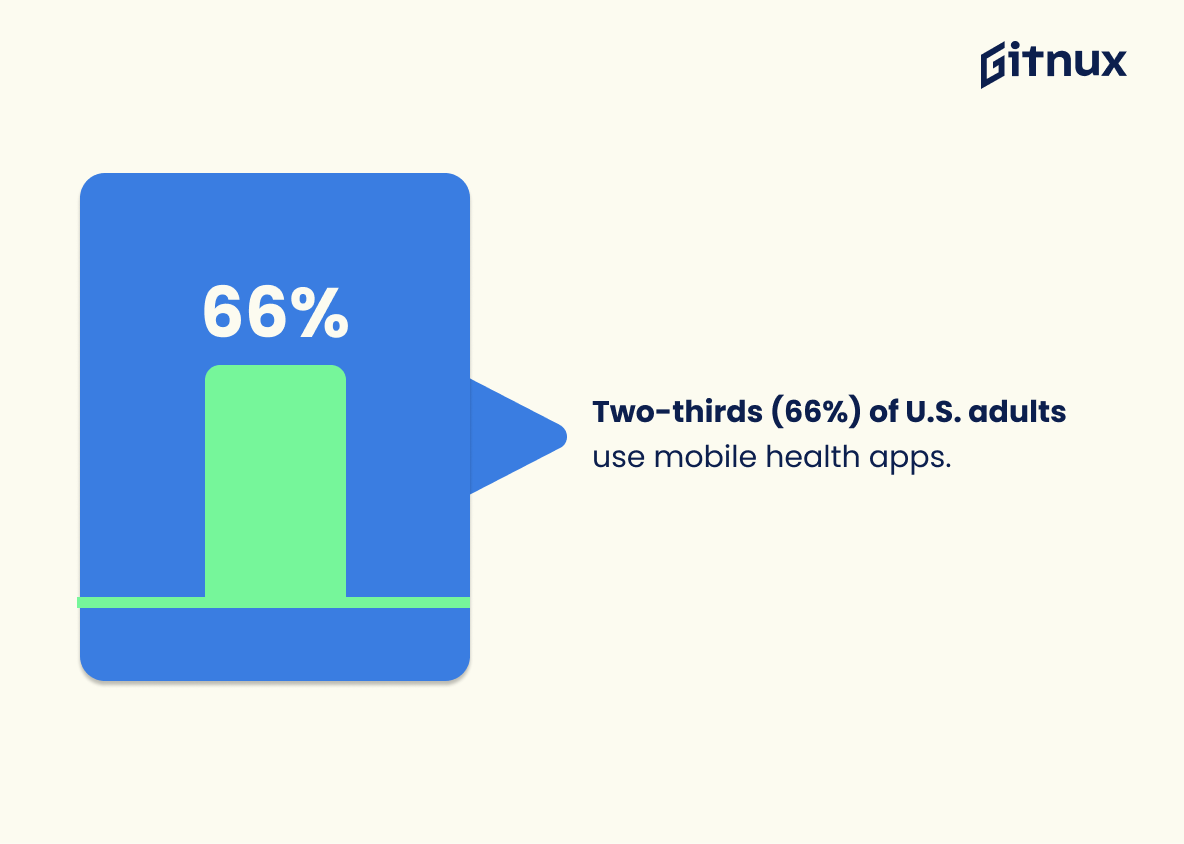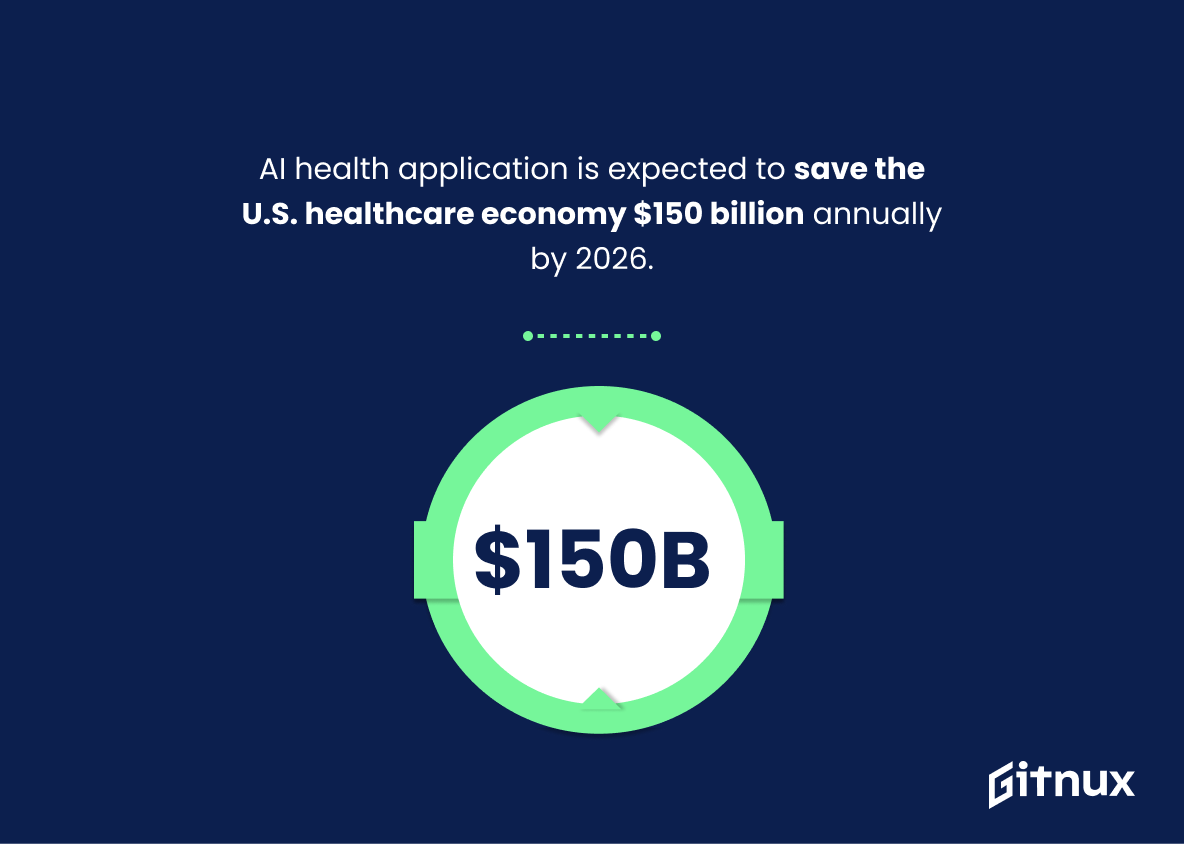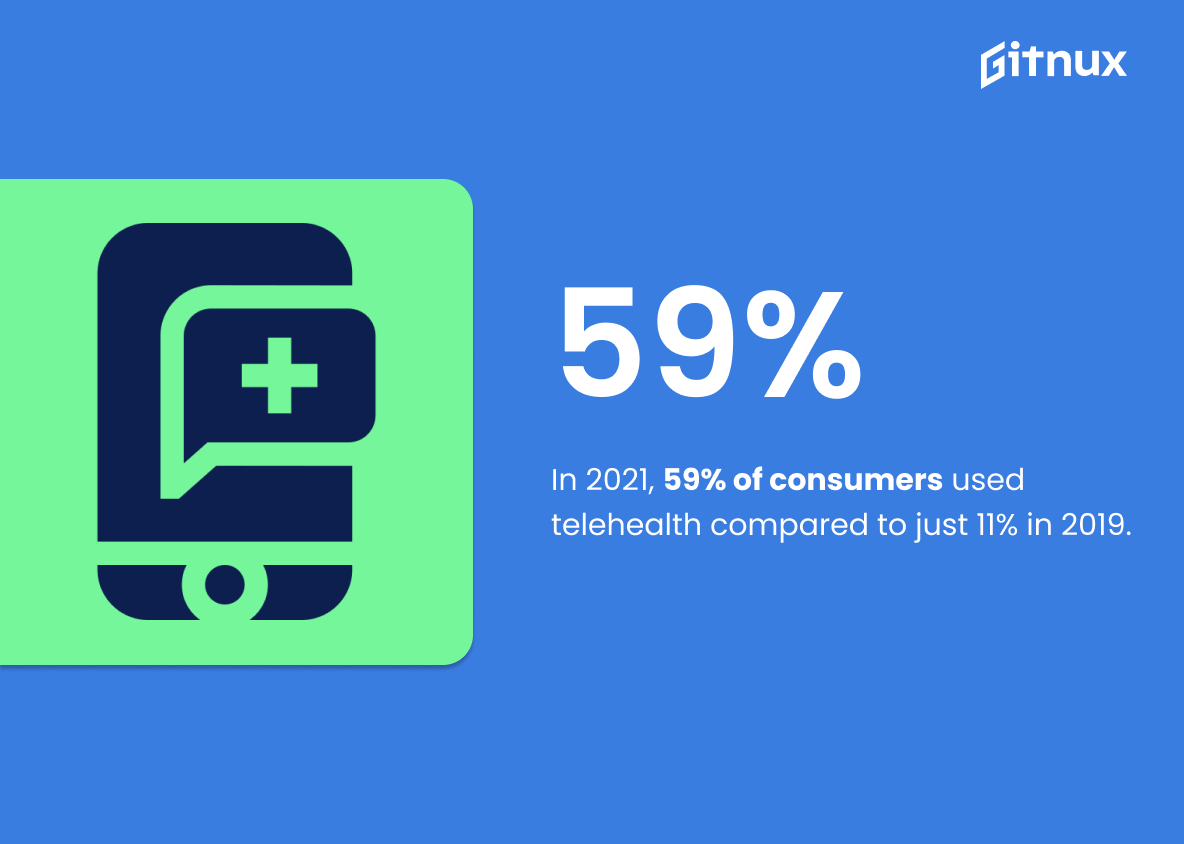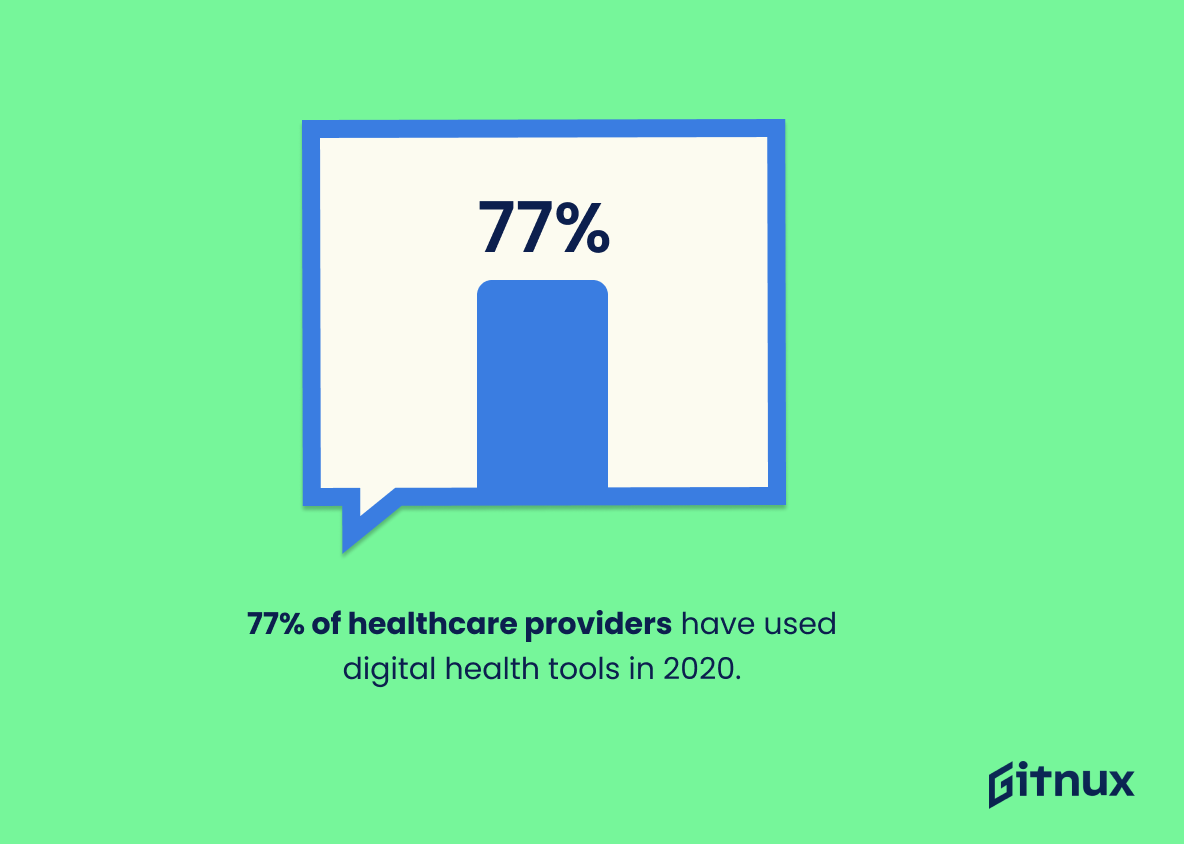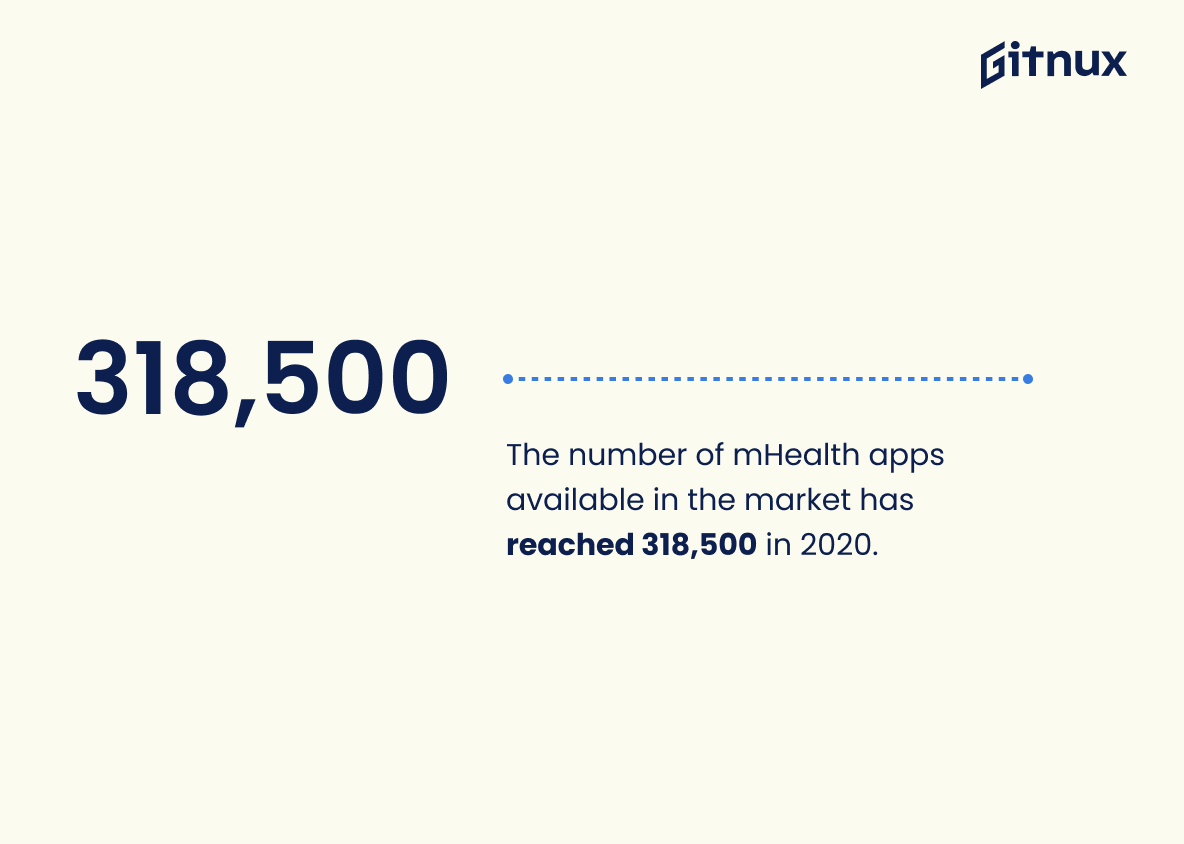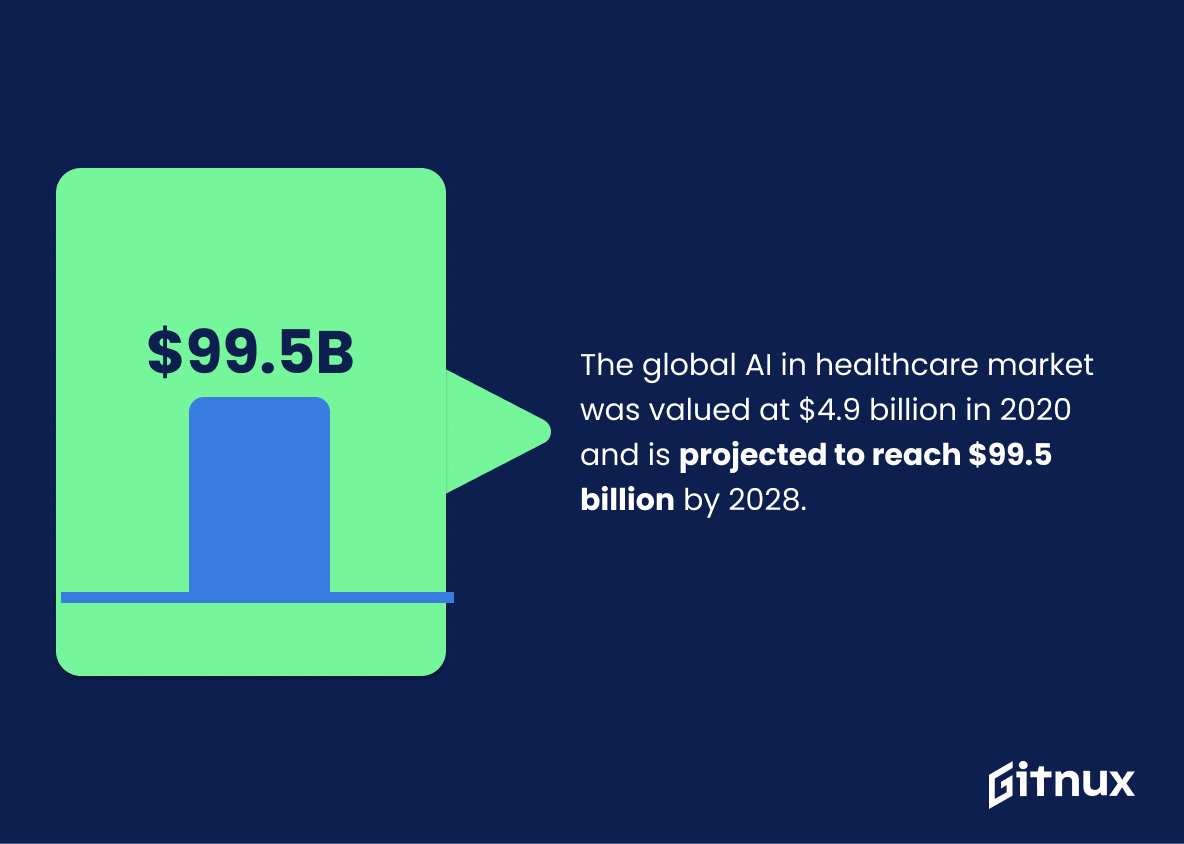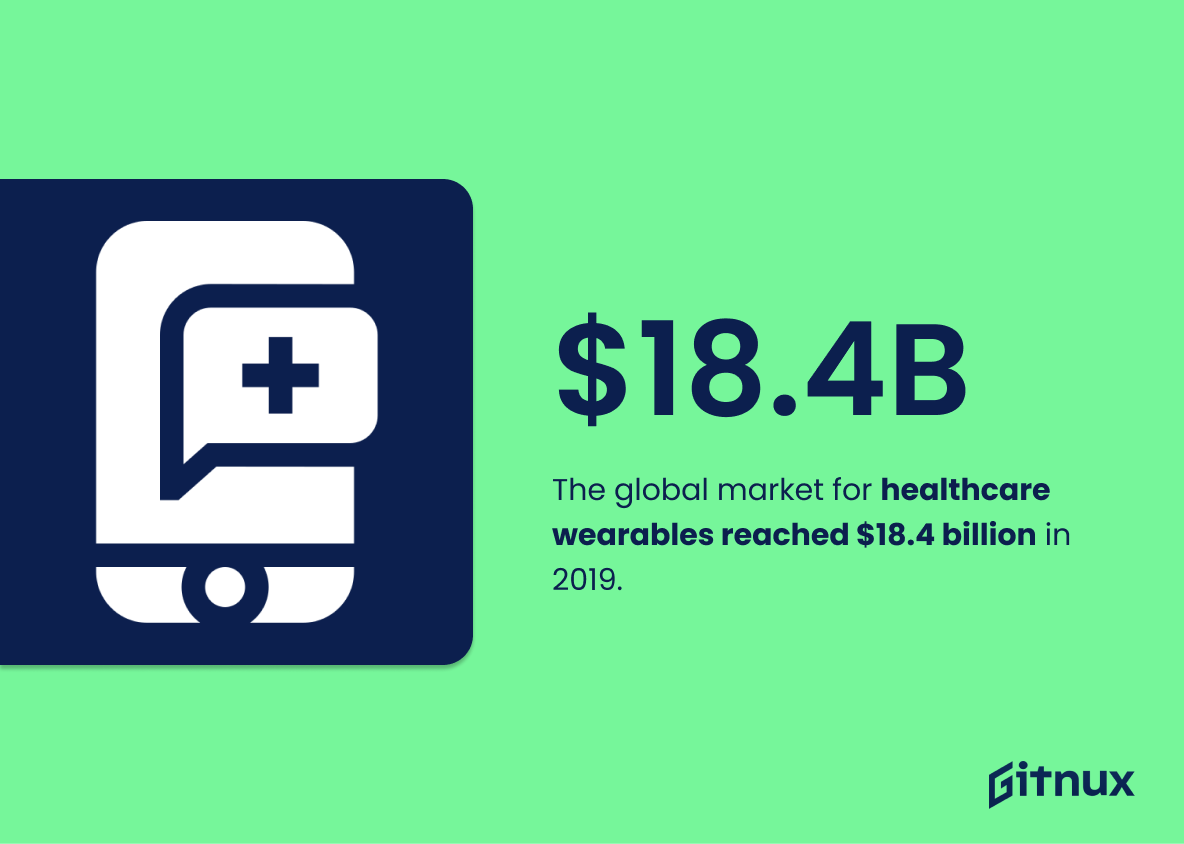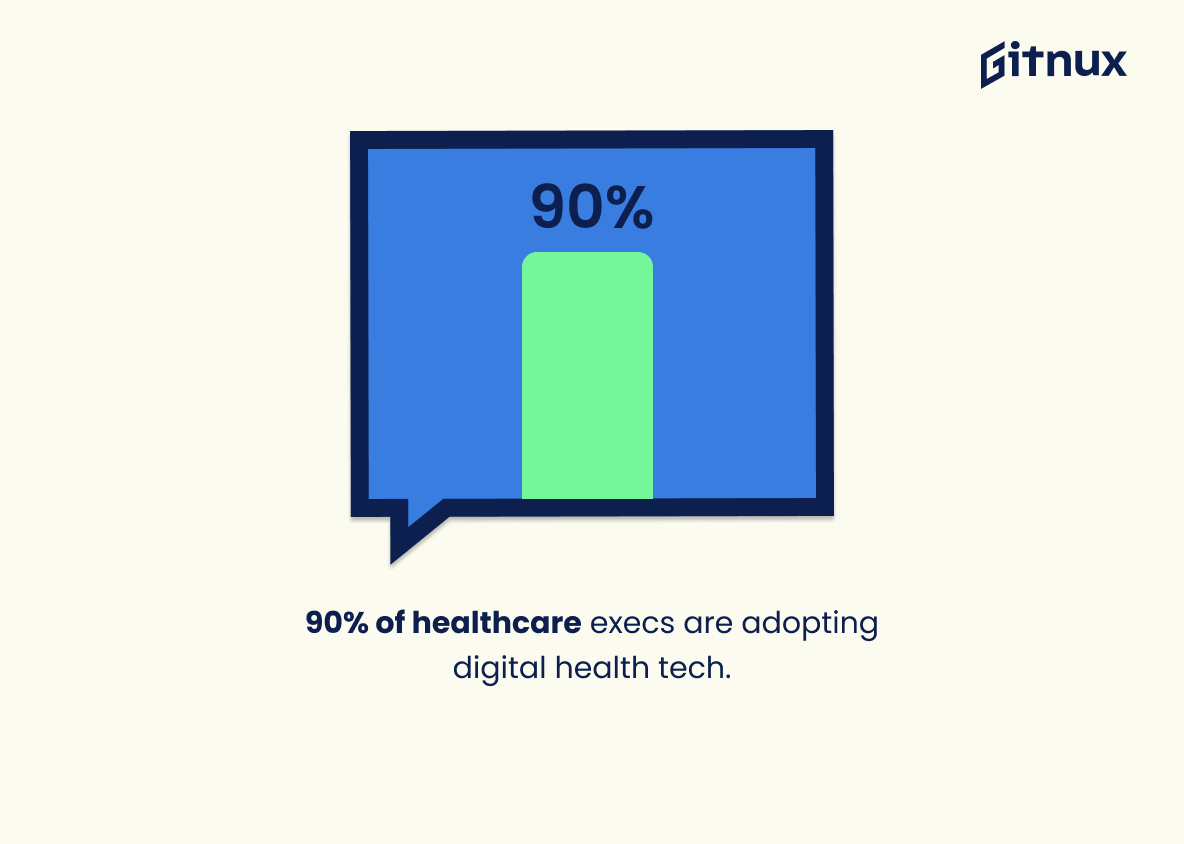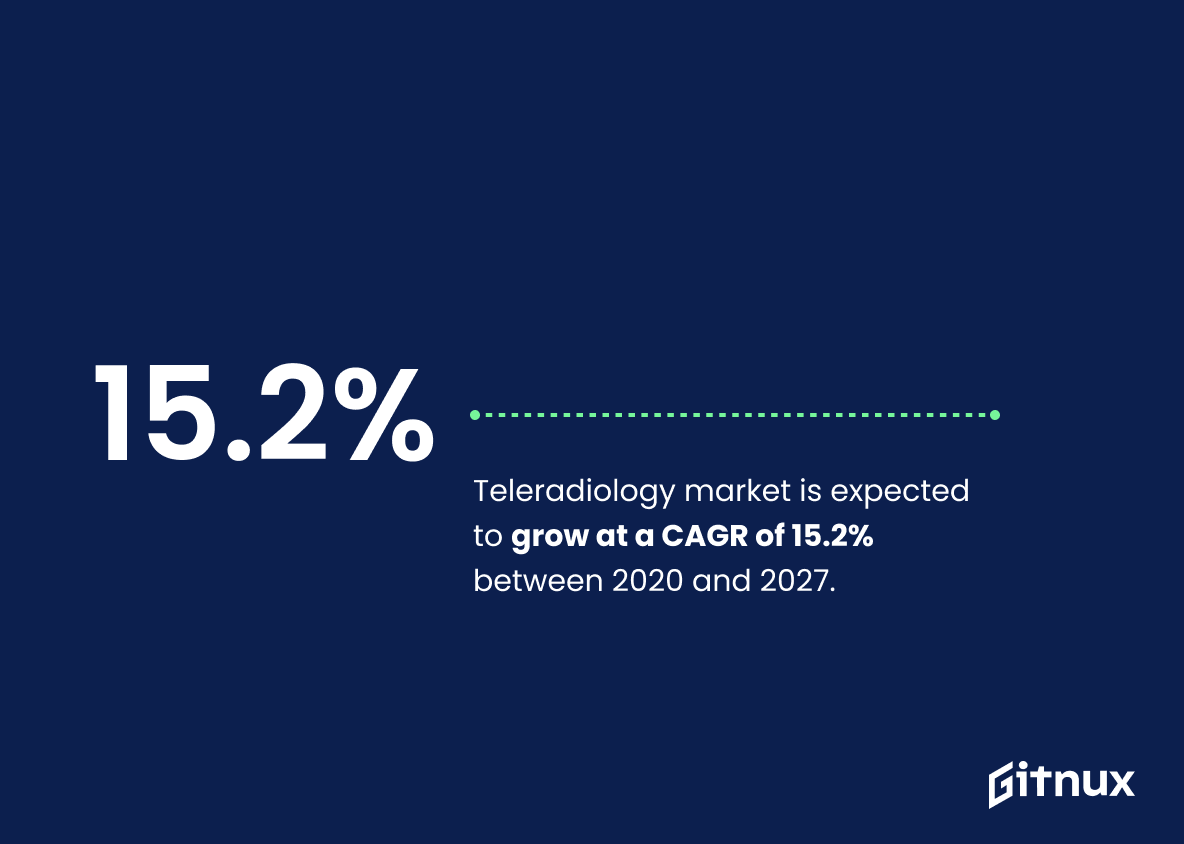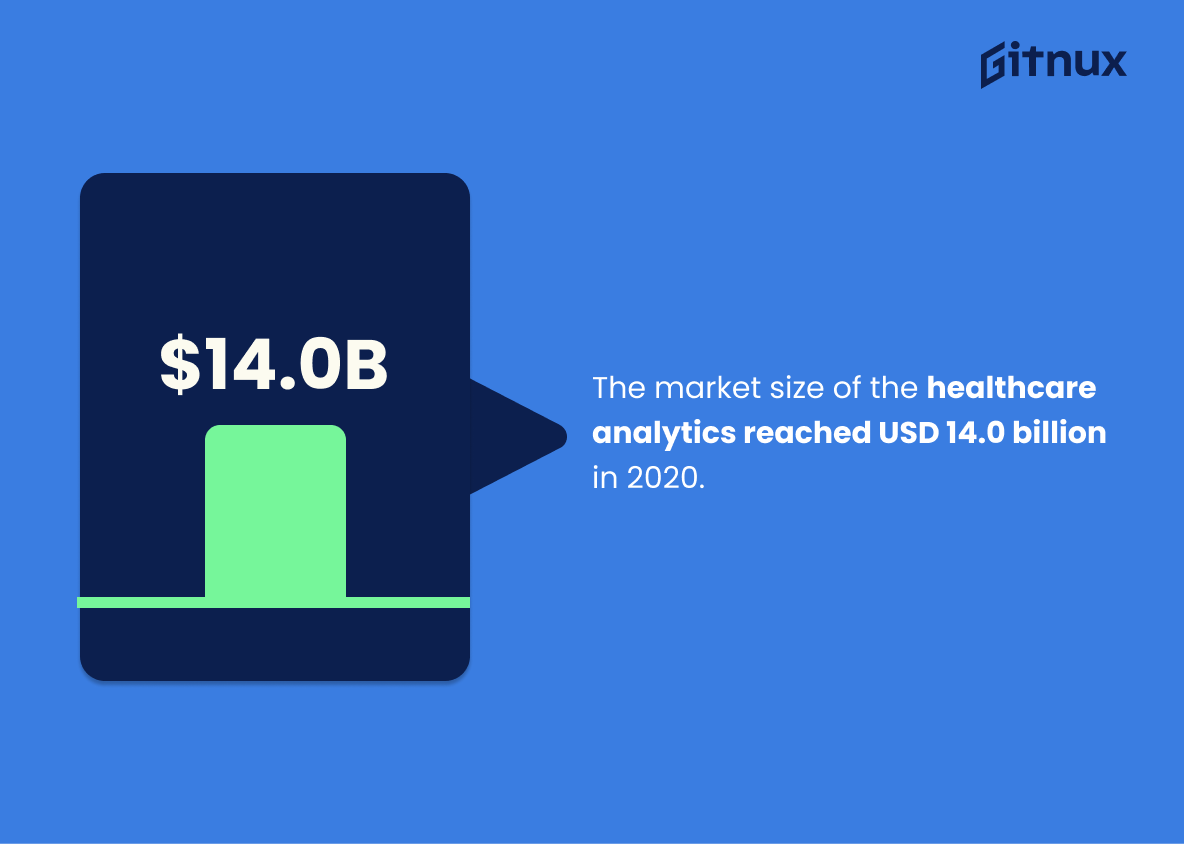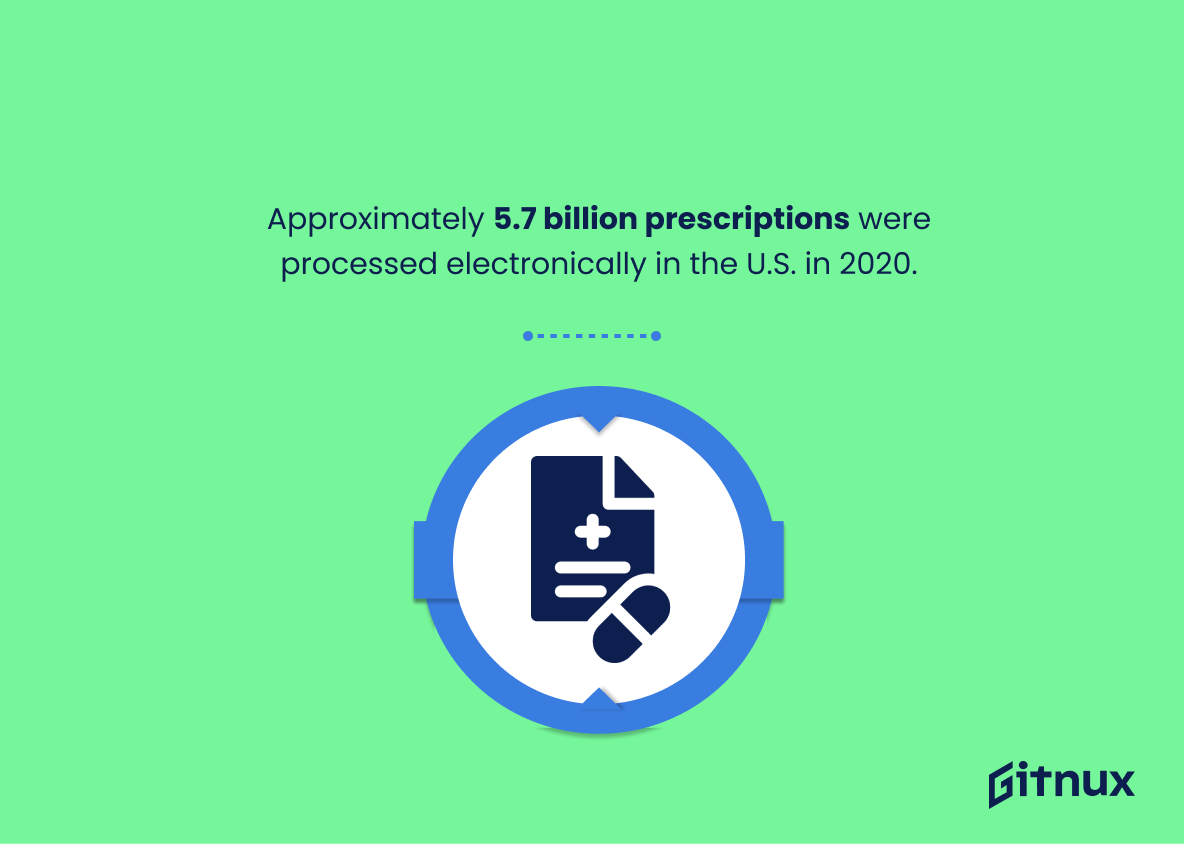In an era marked by rapid technological advancement, it’s no wonder our healthcare systems are experiencing a transformation. The Health Tech Industry unravels new possibilities for patient care, diagnosis, and treatment, leveraging cutting-edge technological solutions. This blog post delves into the undercurrents of this transformative era, shedding light on the pivotal Health Tech Industry statistics.
Whether you’re an investor, healthcare professional, or simply someone intrigued by the integration of technology and healthcare, you will find the subsequent insights valuable. This glimpse into the data behind the digital health revolution may just change your perspective on the future of healthcare.
The Latest Health Tech Industry Statistics Unveiled
The global health tech market was valued at approximately 106 billion U.S. dollars in 2019.
Reflecting upon the astounding magnitude of the health tech market, valued at an eye-watering estimate of 106 billion US dollars in 2019, provokes insightful conclusions about its sheer scale and influence in the global economy. This figure provides an essential quantitative backing, showcasing the overwhelming significance of the Health Tech Industry. In the intricate tapestry of Health Tech Industry statistics, this number emerges as a shining testament to the industry’s robust health and its relentless march towards shaping a future where technology and health are seamlessly integrated.
This stratospheric valuation gives readers, industry insiders, and potential investors a yardstick to understand the growth trajectory, potential opportunities, and challenges that are the vital pulse of the Health Tech Industry. Thus, this towering figure is far more than just a number, it is the proverbial voice echoing the stunning growth story of the Health Tech Industry.
The health tech industry is predicted to reach $504.4 billion by 2025.
Gazing into the future, the astronomical figure of $504.4 billion stamped alongside the growth projection of the health tech industry by 2025 speaks volumes. In the vivid tableau of Health Tech Industry Statistics, this number shines like a beacon, elucidating the immense potential and vibrancy in the sector. By pointing towards a near future worth half a trillion dollars, this prediction is no less than a testament to the massive shifts, colossal scale of adoption, and sweeping transformations that health tech is poised for.
Bearing witness to this anticipated metamorphosis, every stakeholder, from investors to entrepreneurs to end consumers, garners invaluable insight, illuminating their decision-making process. Thus, the reverberations of this single prediction, ring out far and wide, coloring our understanding of the rapidly evolving health tech landscape and setting expectations for a revolutionary future.
Around 96% of medical practices use Electronic Health Record (EHR) systems.
In the colorful tapestry of Health Tech Industry Statistics, the striking figure that approximately 96% of medical practices are harnessing the power of Electronic Health Record (EHR) systems presents a vivid picture of digital applications transforming healthcare. This near-ubiquitous use of EHRs underscores the persuasive pull of technology in modern healthcare, underscoring the fact that patient records have stepped out of the dusty confines of manila folders and leaped into the digital age.
The implication this holds for healthcare administrators, tech developers, and patients is colossal, as it indicates a widespread acceptance of, trust in, and demand for tech-friendly and swift information access solutions. The 96% figure serves as a shining beacon of how deeply ingrained tech has become in our healthcare practices, showing a clear path of development for innovators in this sector. It’s a testament to how Health Tech is not merely a detached, clinical space; rather, it is undeniably and irrevocably entwined with the everyday fabric of health care delivery.
Two-thirds (66%) of U.S. adults use mobile health apps.
Spotlighting the figure that 66% of U.S. adults harness the power of mobile health apps underscores the surging tide of digital health adoption. In the tableau of health tech industry statistics, this numeric revelation unveils a cultural shift towards technology-enabled, self-guided health management.
It’s a clarion call to tech developers and health innovators, underlining substantial existing user base for health applications. The statistic also propels discussion about user engagement, market opportunity, and future investment in the industry, painting a full-bodied picture of the symbiosis between technology and healthcare in modern society.
AI health application is expected to save the U.S. healthcare economy $150 billion annually by 2026.
Peering into the crystal ball of the U.S. Healthcare economy, we uncover a promising prediction. The projection of AI (Artificial Intelligence) health applications saving a jaw-dropping $150 billion annually by 2026 is a riveting revelation.
This forecast paints a vivid picture of the colossal potential of AI in reshaping the healthcare sector. Not only does it underscore a significant reduction in healthcare costs, but it also hints at a more efficient, proactive, and personalized care for patients. The magnitude of this shift signifies the embracing of technology by an industry traditionally viewed as hands-on and personal.
For stakeholders in Health Tech, these numbers offer an arresting prospect – an invitation to be part of a groundbreaking shift. For investors, it’s a flashing green light that screams profit and advancement. For healthcare professionals, it signifies the beginning of a new era, where man and machine will work hand in glove to improve the quality of care.
Thus, this $150 billion saving is not just a statistic. It encapsulates the dawn of unprecedented opportunities, the knock of colossal challenges, and above all, the catalyst for a revolution in the healthcare landscape.
In 2021, 59% of consumers used telehealth compared to just 11% in 2019.
Highlighting an unusually steep upsurge, the adoption of telehealth saw a prodigious leap from 11% in 2019 to 59% in 2021. This quintessential data point sketches an undeniable story of sunrise in the health tech industry. The bounding upward trajectory is likely driven by the circumstances of the global pandemic but also symbolizes a transformative shift in patient behavior and in the acceptance of digital health solutions.
Beyond indicating a simply responsive trend, it underscores the budding potential and vitality that telehealth holds for future health care delivery. This dramatic amplification can help health tech startups and established companies alike to gauge the market size, tailor their innovations, forecast future trends, and shape their strategies — thereby giving them a competitive edge in an evolving industry landscape.
77% of healthcare providers have used digital health tools in 2020.
Diving into the techno-medical sea, an intriguing treasure unearthed reveals that a whopping 77% of healthcare providers integrated digital health tools into their practice in 2020. This compelling number sails well beyond being just another statistical landmark. With over three-quarters of care providers flipping the traditional healthcare page to embrace digitalization, it vividly paints the shifting hues of the health tech landscape.
More than just an immigration to new technology, it demonstrates a revolutionizing paradigm shift, spotlighting the industry’s adaptation and endorsement of technological advancements. This substantial digital adoption by health custodians conveys formidable evidence driving home the point that tech integration in healthcare is no longer a fringe fancy but a mainstream expectation.
Hence, this statistic anchors a pivotal point when decoding health tech industry’s narrative, providing a critical glimpse into the present scenario and a tantalizing teaser of the impending future. The unsaid story woven in these numbers sets the stage for a profound understanding of progressing digital health evolution, influencing policy decisions, funding options, technology development, and stakeholder behavior – all integral to sculpting the future of health tech industry.
The number of mHealth apps available in the market has reached 318,500 in 2020.
Highlighting the impressive figure of 318,500 mHealth apps available in the market as of 2020 serves as a testament to the burgeoning evolution and immense growth of the Health Tech industry. It underscores the vast landscape of digital health, illustrating the dynamic interplay of technology and healthcare. This wave of innovation has not only carved new pathways for patient management and health services but also has affirmed the burgeoning interest and investment in this sector.
This ample availability of mHealth apps signifies the increasing accessibility and inclusivity of health resources, which is a key aspect of transforming global health outcomes. This insight paints a vivid picture of how technology is relentlessly reshaping the health sector, marking it an instrumental yardstick for contextualizing the growth trajectory of the Health Tech Industry.
The global AI in healthcare market was valued at $4.9 billion in 2020 and is projected to reach $99.5 billion by 2028.
The fascinating trajectory of the global AI in healthcare market from a commendable $4.9 billion in 2020 to an anticipated $99.5 billion by 2028, serves as a powerful testament to the accelerating integration of advanced technology into the health sector. Not only does this statistic reflect the financial magnitude of AI’s influence in healthcare, it also signifies a seismic technological revolution poised to transform healthcare provision, policy, and practice.
This striking statistic captures the attention of stakeholders and observers in the health tech industry, underscoring the future trends. This paints a compelling image of an industry on the threshold of massive expansion, driven by innovative artificial intelligence applications designed to augment human capabilities, improve patient care, and facilitate precision in medical procedures.
So, whether the reader is a potential health tech investor, a medical professional seeking to stay ahead of the curve, or simply an enthusiast interested in future healthcare trends, this statistic delivers a clarion call: The healthcare landscape is rapidly and irrevocably changing, with AI standing as a commanding vanguard of this evolution. This is much more than a statistic, it is a forecast of the innovative storm brewing at the heart of healthcare technology.
Personal health information tracking users has grown from 17% in 2013 to 42% in 2020.
Highlighting the dramatic increase in personal health information tracking users from 17% in 2013 to 42% in 2020, paints a compelling picture of the rapid embrace of Health Tech within a relatively short span. The substantial growth magnifies the expanding market and popular interest in this sector, which is seen as a ground-breaking way for individuals to take an active role in their health journeys.
In the landscape of Health Tech Industry, this surge underscores a radical shift in the consumer behavior, underscoring a growing reliance on technology for personal health management. So, if you’re in the health tech sector or planning to dive in, this statistic serves as a clear cue: the market is ripe, and opportunity abounds.
The global market for healthcare wearables reached $18.4 billion in 2019.
Spotlighting the impressive figure of $18.4 billion for healthcare wearables in 2019 provides a clear snapshot of the enormous financial traction and preference shift that Health Tech industry currently enjoys.
This whopping figure is evidential of both the massive consumer demand and the explosive growth of innovative medical products designed to promote healthier lifestyles. As a cornerstone of the Health Tech industry, healthcare wearables wield a substantial impact on market trends, investment opportunities, and prospective research directions, hence underscoring the behemoth nature of this sector.
90% of healthcare executives say their institutions have implemented, or are currently implementing, digital health technology.
A reality as indicated by the quote ‘90% of healthcare executives say their institutions have implemented, or are currently implementing, digital health technology.’ signifies a seismic shift in the healthcare landscape. This piece of data shines like a beacon, guiding us towards a future where digital health technology forms the backbone of our healthcare institutions. It illustrates the seriousness and commitment of healthcare executives towards leveraging technology for efficient patient care and streamlined healthcare processes.
A blog post focusing on health tech industry statistics would not be complete without spotlighting this significant shift, signaling the dawn of an era dominated by digital health innovation. Furthermore, it stamps a majority consensus on the adoption of health tech, ensuring it’s a priority, not an afterthought, in the healthcare discourse.
Teleradiology market is expected to grow at a CAGR of 15.2% between 2020 and 2027.
A blog post pertaining to Health Tech Industry Statistics garners vitality and authenticity by incorporating a piece of crucial statistics like the anticipated growth of the Teleradiology market by 15.2% CAGR between 2020 and 2027. This expected incline is not just a number; it’s an enlightened forecast hinting at the exponential enhancement and adoption of technology in the healthcare sector.
It acts as a magnet for investors, business owners, and stakeholders, drawing their attention to the untapped potentials in Health Tech, Teleradiology being a shining example. Such an accelerated growth rate elevates teleradiology from a mere concept to a game-changer in the industry, shaping the future of medical diagnostics and healthcare globally.
The market size of the healthcare analytics reached USD 14.0 billion in 2020.
Drawing attention to the monumental achievement of the healthcare analytics sector breaking through to a market size of USD 14.0 billion in 2020 gives trumpeting evidence of adaptability and progression within the health tech industry. It underscores that influencial technological developments are not only taking center stage, but are also reaping unprecedented monetary returns.
In a blogpost on Health Tech Industry Statistics, this piece of information sets a solid backdrop for an intricate story of digital healthcare evolution, offering readers an intriguing fiscal barometer of evolving trends, investment potential, and the scale of horizon-expanding impact in this dynamic field.
Approximately 5.7 billion prescriptions were processed electronically in the U.S. in 2020.
Delving into the impressive metrics of the Health Tech industry, one cannot help but be astounded by the sheer volume of electronic prescriptions processed in the U.S in 2020 – a staggering 5.7 billion. This figure provides a testament to the technological revolution sprouting in the healthcare sector. Digital prescriptions not only represent forward strides in efficiency and convenience, but they also signify remarkable improvements in patient safety by reducing prescription errors.
Consequently, this sharp pivot towards digitalization comes as powerful evidence of how technology is remodeling the healthcare landscape, a key aspect that underscores the direction and potential growth of the Health Tech industry.
Patient monitoring devices market is expected to reach USD 25.31 billion by 2023.
Unveiling a possibly lucrative future for the Health Tech Industry, the anticipated ascent of the patient monitoring devices market to a staggering USD 25.31 billion by 2023 signifies a substantial opportunity for growth and innovation. The thriving demand combined with technological advancements propels this sector into a pivotal position within the industry.
As such, it holds great relevance and weight in any discussion around health tech industry statistics. Essentially, this projection gives innovators, investors, and stakeholders a clear and tangible target to aspire, innovate and invest towards, further underlining its overall importance in the narrative of health tech industry growth.
The Digital Health Funding in 2020 crossed $14.1 billion across 440 deals.
The riveting surge to a staggering $14.1 billion in digital health funding in 2020 captures the dynamic and flourishing landscape of the Health Tech Industry. These funds, spread across no less than 440 deals, offer a testament to the sheer scale and striking potential of this rapidly proliferating sector. Clearly, they underscore the growing investor confidence in digital health ventures, reflecting a sweeping trend that’s poised to redefine future healthcare practices.
This leap in funding figures undeniably affirms that the industry is not just surviving; it is thriving amidst global transformations. A kaleidoscopic view of these numbers signifies a solid financial impetus, strengthening the industry’s backbone, fuelling innovations and fostering better healthcare solutions worldwide.
Conclusion
Keeping track of health tech industry statistics is vital for businesses and health organizations looking to stay competitive and respond to changing trends. The sheer transformative potential of health tech is increasingly gaining recognition, and the advancements in this field are growing at a rapid pace. As such, the growth statistics in this sector are expected to accelerate even further.
By staying informed, businesses can seize opportunities to implement cutting-edge technologies to improve patient outcomes, streamline services, and harness data-driven insights for strategic decision-making. Truly, the future of health care lies in the burgeoning world of health tech.
References
0. – https://www.www.iqvia.com
1. – https://www.rockhealth.com
2. – https://www.www.surescripts.com
3. – https://www.www.businesswire.com
4. – https://www.www.fortunebusinessinsights.com
5. – https://www.www.healthit.gov
6. – https://www.www.idtechex.com
7. – https://www.www.ncbi.nlm.nih.gov
8. – https://www.www.grandviewresearch.com
9. – https://www.www.researchcosmos.com
10. – https://www.www.statista.com
11. – https://www.www.reportsanddata.com
12. – https://www.www.marketsandmarkets.com
13. – https://www.www.accenture.com
14. – https://www.www.polarismarketresearch.com
